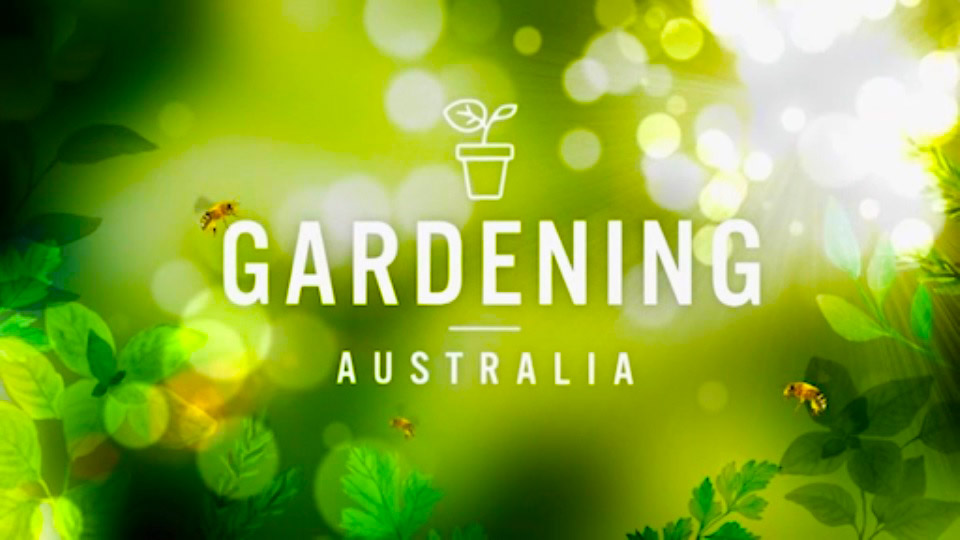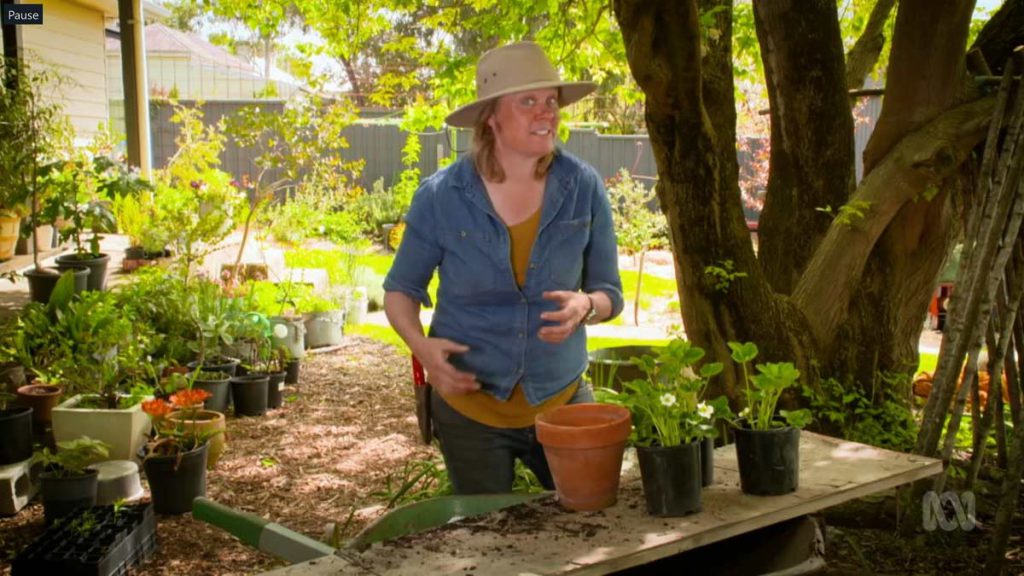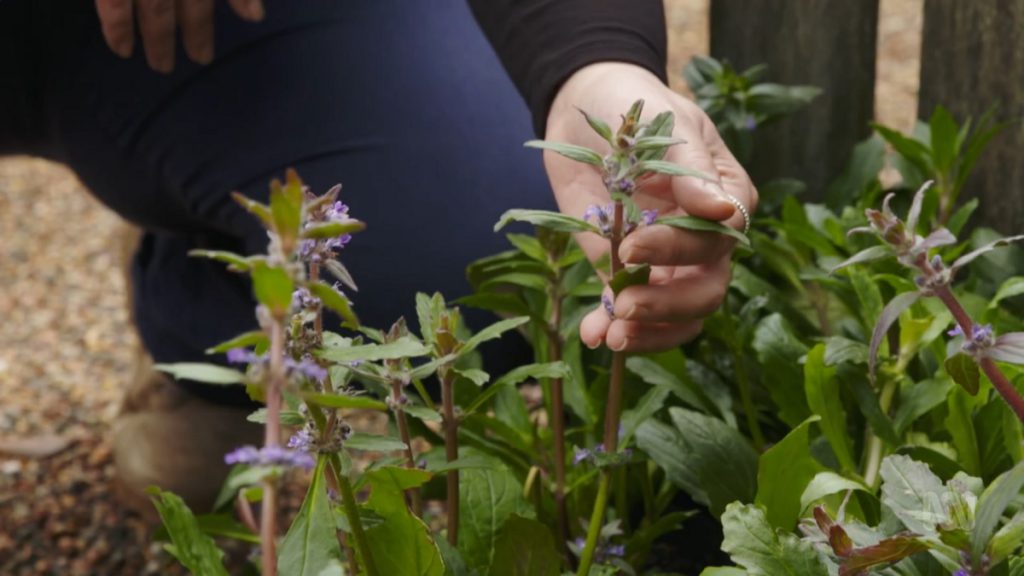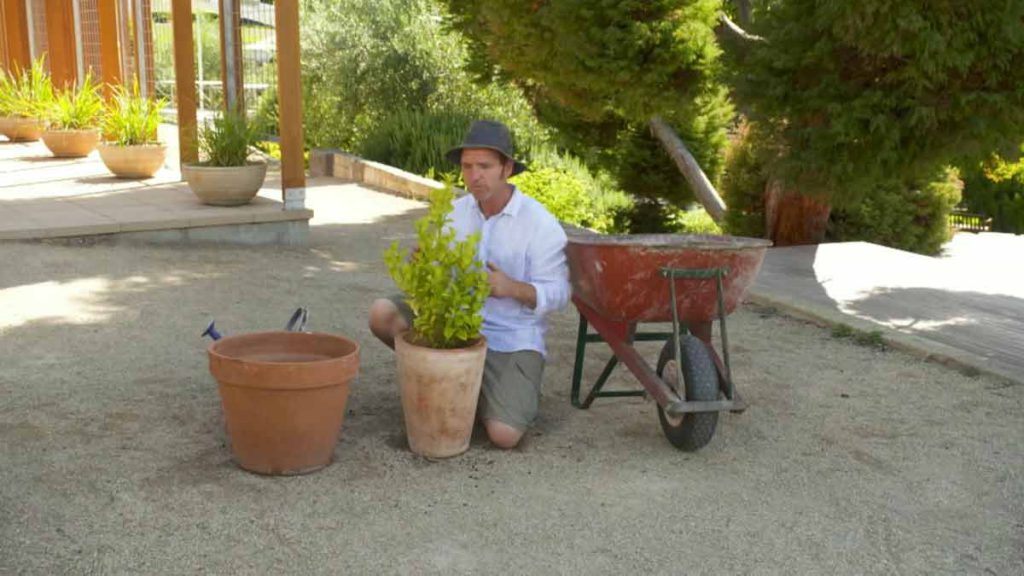Gardening Australia episode 27 2021: Jerry Coleby-Williams visits a city garden; Jane looks at succulents; Costa Georgiadis learns about bushfire recovery; Sophie Thomson visits an historic garden; Josh Byrne explores a winery; We meet farmer Palisa Anderson.
Inspiring, entertaining and full of practical advice, join Costa Georgiadis and the team as they unearth gardening ideas, meet avid gardeners and look at some of the most inspiring gardens from across the country.
Gardening Australia episode 27 2021
Tropical Townhouse
Jerry explores a stunning small garden in Brisbane, filled with colour and culture. We’re in Indooroopilly, in Brisbane’s inner-west. It’s here we find Annette, a life-long gardener. “I got it from my father. I grew up in suburban Melbourne, and my father was a lot like that generation; they grew vegetables. He’d also do rows of annuals, but I knew that wasn’t my thing. But I knew I liked it. It’s necessary for the soul”.
After running a farm and tourism business in Tweed NSW, she bought a townhouse in Brisbane to downsize and retire to. It’s here that she “made a rainforest”. Over a 160sqm of garden, Annette has carved out a private subtropical paradise, littered with bromeliads, ferns, orchids, heliconias, philodendrons and other classic equatorial garden fare. “I’d come from Tweed where you get the rainfall and there’s true rainforest around, so subtropical plants felt like the natural way to go with this garden”. “I’m not interested in veg, I’m not interested in annuals. I’m interested in the texture, colour and form of leaves. The contrast in forms is fascinating”.
Succs to be Indoors
Jane looks at some of the best succulent plants to grow indoors and shows how to combine them for best affect. We’re at a busy nursery in inner-city Melbourne. If there’s one type of plant that’s more popular than ever, it’s succulents. Prized for their weird and wonderful colours and shapes, these plants are as coveted by collectors as they are landscape designers. Jane’s going to show us some sterling examples, and how they might fit into some unpromising spaces at your place. She’ll also show how to propagate and grow these plants so they’re at their very best.
Dylan Hewlett is a nursery manager and succulents are his passion. He has hundreds of succulents at home and is here to show Jane through some of the treasures on offer.
When you think of these plants, you may think of leathery, spiny little survivors baking on a desert plain, and while there’s many that fit into this category, there’s hundreds of species that will grow quite happily in a part shaded spot, or even indoors!
Pea Hack
Millie demonstrates a simple hack for growing peas. Millie loves growing peas for their delicious pods and foliage, but unfortunately, the pests also love them. The seeds and emerging new seedlings are particularly vulnerable to things like slugs and snails and the birds love to dig them up and mice like to eat them too, so she needed a solution.
Of course, the simplest way to get little delicious seeds up to a seedling stage is to raise them in containers and then transplant them out into the garden, but peas don’t like to be ripped apart and transplanted. Instead, Millie has two really simple solutions!
Bananas in Tassie
Tino explains how to grow bananas in Tasmania. Tino planted a cool climate banana variety at the patch a few years ago as an experiment. This year the banana has cropped, after a long mild season. A cold snap may still lose the fruit, but Tino is optimistic.
The great thing about this experiment is it shows you can grow plants outside their comfort zone.
Greening Canberra
Costa visits a nursery growing plants for revegetation projects in fire-affected regions. The 2020 Black Summer bushfires had a devastating impact on the ACT and surrounds, with 30% of the territory’s landmass affected. The intensity and extent of fires, along with threats from development and climate change, means that nature still needs a helping hand to survive and thrive. Growing new native plants and getting them to where they are needed is more important than ever, and that’s where nurseries are playing a vital role.
In suburban Canberra, the 6000m2 Greening Australia native nursery has been doing just that, helping landholders and national parks to increase indigenous vegetation corridors. There’s a developing bushfood garden out the front, a seed collection garden out the back, greenhouses, and tables stacked with pots where thousands of plants from 100+ species are brought to life. Every week, the nursery is transformed into a vibrant hive of activity with up to 30 volunteers sowing seeds, weeding, watering, packing orders and forming strong community bonds.
Heysen’s Garden Muse
Sophie visits the beautiful historic garden that inspired Australian landscape artists Hans and Nora Heysen. Flowers, trees and landscapes have often provided unlimited inspiration for many artists, and Hans Heysen (1877–1968), one of Australia’s most well-known landscape painters was no exception. His much-loved house, studio and large garden in the Adelaide Hills is now open to the public.
Hans Heysen purchased the undulating property in 1912. It’s over 100 hectares and there’s a 2 hectare garden surrounding the ‘arts and craft’ style house, positioned at the top of the garden. The large Himalayan cedars near the house date from the 1870’s and give the property its name.
Plants for Porches
Millie profiles her favourite plants to pop on the porch.Verandas can be a tricky spot to grow plants; the overhang keeps them dry while it’s often shady as well. Millie has a few tried and true native favourites for her front porch.
Potatoes
Tino takes a look at the history of the humble spud! When did humans start cultivating potatoes? Well, scientists estimate it was about 8,000 years ago in South America, somewhere near the border of modern day Bolivia and Peru.
The first spud farmers would have been hunter gatherers who lived near Lake Titicaca in the Andes Mountains. The wild potatoes that grew around the lake are the forebears of the present day domestic spud. Over the millennia, people in the Andes developed potato varieties for growing at different altitudes and in different climates. And now, the International Potato Center in Peru has identified 4,300 different varieties that grow in that region. Book my flight!




